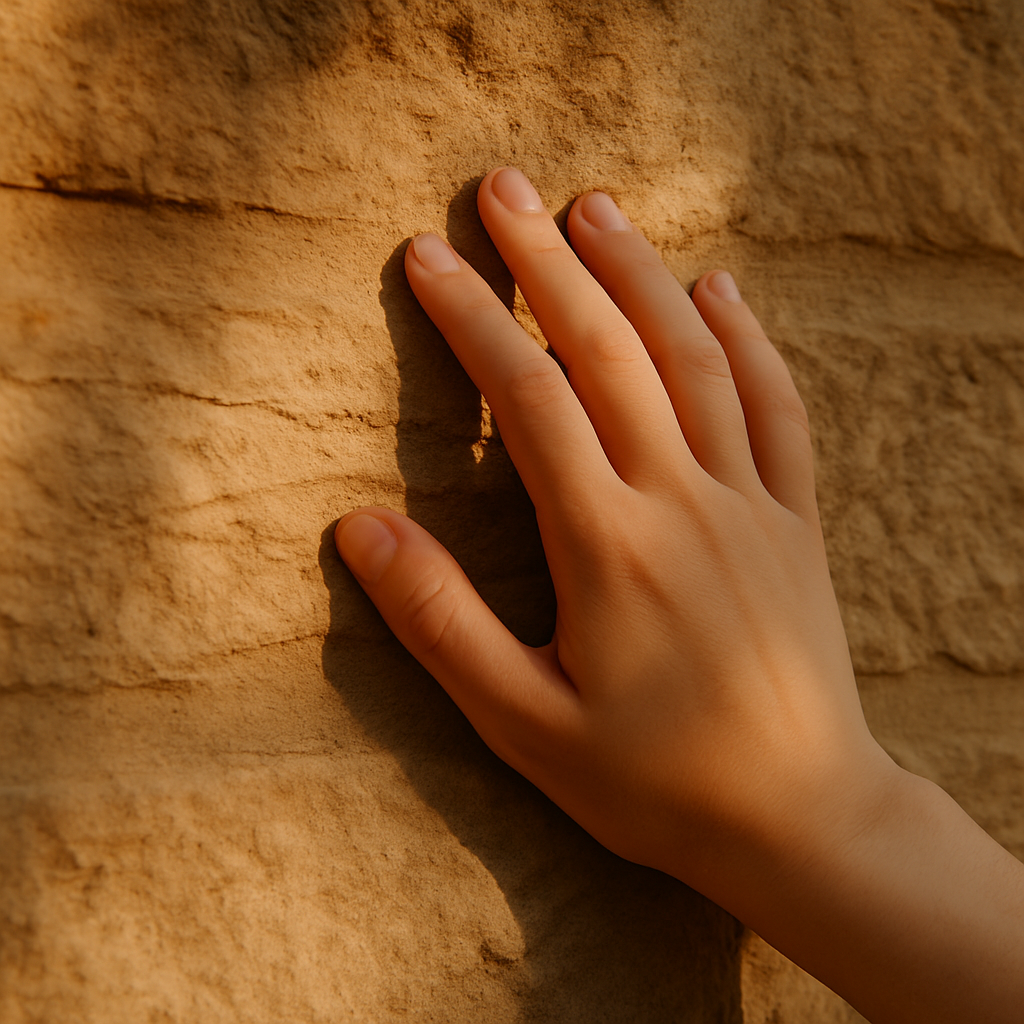Sensory Architecture Series: Touch
The First Language of Architecture
Before we speak, before we see, before we understand light or colour or space — we feel. As infants, touch is our first interface with the world. It tells us what is warm and safe, what is sharp and dangerous. That primal sensitivity never truly leaves us, yet in much of our built environment, it is neglected.
Modern architecture tends to prioritise visual aesthetics and digital renderings, all while forgetting how a space feels in the most literal sense. But when we bring the sense of touch into our design thinking — when we truly attend to the haptic experience — architecture comes alive in a different way.
This is the first post in our Sensory Architecture Series, and we begin where architecture begins: with the hand on the wall, the bare foot on warm timber, the texture of stone under skin.
Haptic Memory: Why Touch Matters
We carry tactile memories with us. The cool smoothness of river stone. The polished brass of a stair rail. The softness of a woollen blanket pulled close on a winter morning.
These memories are not visual — they are deeply embodied. They evoke mood and emotional tone. Think of the difference between a timber kitchen floor and cold ceramic tile in bare feet. Or the grounding presence of rough-sawn timber beams compared to a synthetic plasterboard shell.
Touch grounds us. It orients us. In a time when so much of our interaction is mediated through glass screens, touch reconnects us with our surroundings — and ourselves.
Designing for the Hand, Not the Camera
One of the unintended consequences of architecture’s digital shift is that too often, materials are chosen for how they look, not how they feel.
We see this in over-specified slick surfaces — shiny, wipeable, characterless. We see it in engineered laminates that mimic timber but have no grain, no warmth, no soul. These spaces might photograph beautifully. But they do not invite touch. They do not reward it.
True sensory architecture invites exploration with the hand. It provides variation — smoothness, roughness, resistance, give. It uses texture to slow us down, anchor us in the moment, and create delight.
Material Soul: Honest, Textured, Natural
Natural materials — timber, stone, clay, wool — offer the richest tactile experiences. They speak a sensory language we intuitively understand.
You can tell real timber by its warmth, its grain, the subtle give under pressure. You can feel the crystalline hardness of stone, the irregularity that reminds you this was once part of a mountain.
These are materials that age with dignity, that record the trace of time and use. A timber balustrade worn smooth by years of hands. Terracotta tiles patinated by footsteps. Walls that invite leaning.
In contrast, synthetic materials often feel inert. Their perfection betrays them. Their touch is cold, repetitive, sometimes even unpleasant. And crucially, they disconnect us from nature and from each other.
Thermal Touch: Temperature and Comfort
Touch is not just texture — it is also temperature. A room’s material palette affects how warm or cold it feels to the skin.
Think of the shock of a metal bench on a winter morning, or the comfort of timber beneath bare feet. Thermal conductivity matters. Stone and concrete may hold heat well in sunlight but feel harsh when unheated. Timber and wool, by contrast, hold warmth and provide a feeling of comfort and refuge.
By understanding this, we can design buildings that offer passive thermal delight. Window seats that warm in the sun. Deep reveals that invite leaning. Surfaces that cradle warmth rather than repelling it.
Tactile Scale: Spaces That Respond to the Body
Touch also defines scale. When a space is too large, too glossy, too distant — it feels alien. When materials are brought within reach, when details are human-scaled, the body responds.
We feel comfortable in spaces that acknowledge our proportions. Railings at the right height. Textured walls that guide the hand. Nooks with soft cushions.
Sensory design means asking: where will someone touch this? Sit here? Lean there? Will this feel good against the skin? Is it too sharp, too cold, too coarse? We are always designing for the body, whether we realise it or not.
The Emotional Texture of Place
Touch influences mood more than we give it credit for. A building that is all hard edges and cold surfaces can feel emotionally sterile.
Conversely, a space that offers warmth, softness, variation — a space that rewards touch — becomes comforting, calming, even joyful.
Tactile cues also play an important role in accessibility and intuitive navigation. A handrail that changes material near a stair landing. A textured floor surface that signals a threshold. When done well, these subtle shifts create architecture that is both emotionally rich and functionally generous.
Designing Touch into Every Project
At Daedal, we believe that sensory richness should not be an afterthought. It must be designed in from the outset. This means choosing materials not just for performance, but for how they interact with the human hand.
It means balancing smooth and rough, hard and soft, cool and warm. It means thinking about how surfaces will age, how they will be used, and how they will feel across the seasons.
Touch is the architecture of presence. It brings us into relationship with space. It slows us down. It reminds us we are alive.
Final Thought
In a world chasing efficiency and image, let us not forget the importance of touch. The quiet moments of contact. The sensory whispers of timber, stone, wool, and earth. These are not luxuries. They are the very foundation of what it means to create architecture that feels alive.
This is the beginning of our sensory exploration. Next up: Sound — and how the acoustics of space can elevate or erode its emotional resonance.
